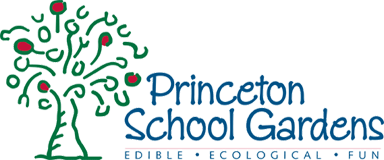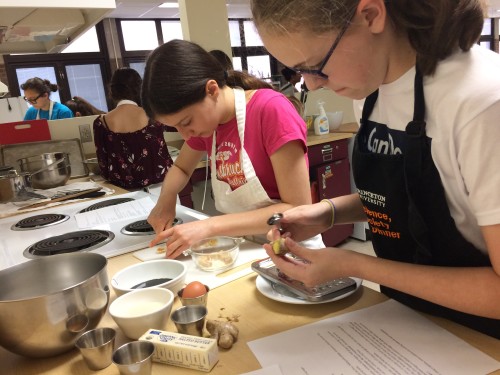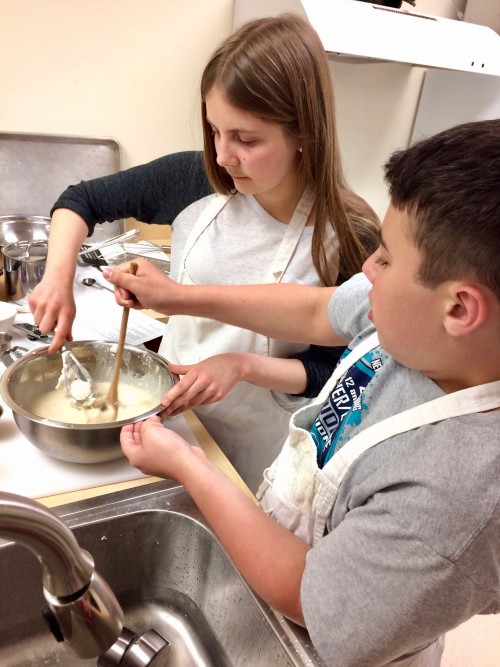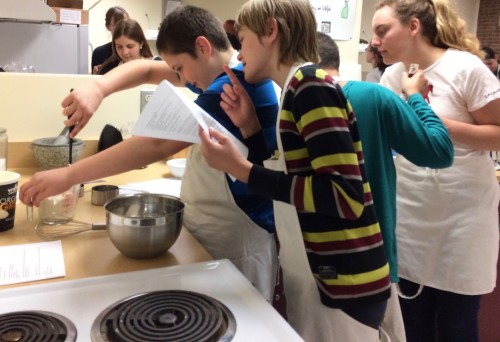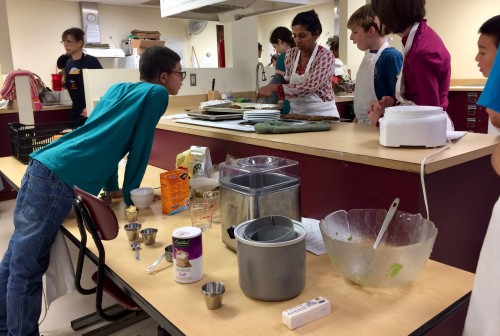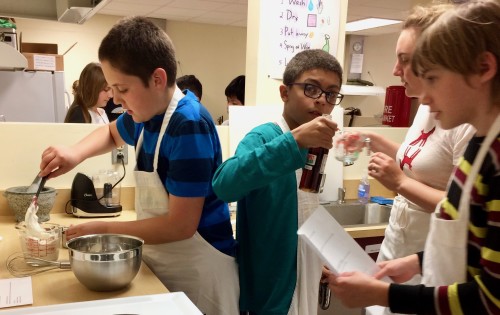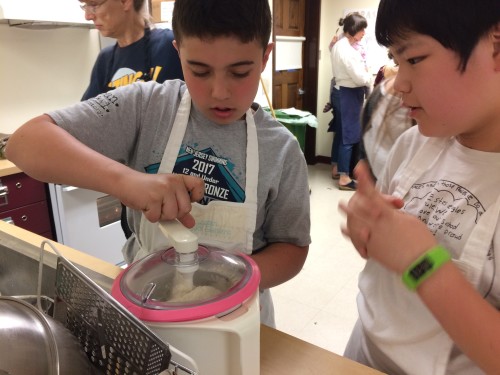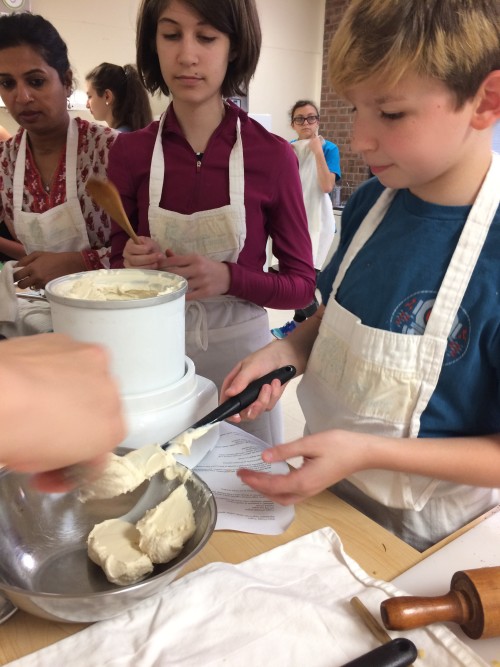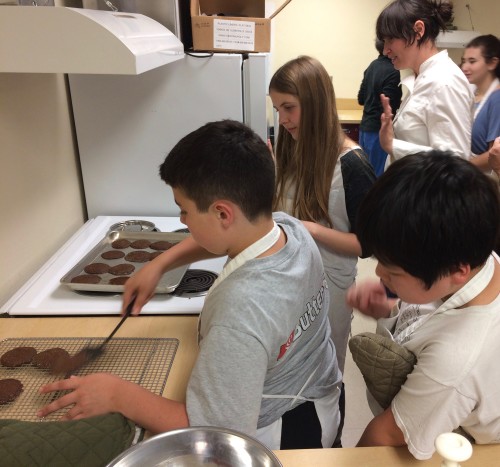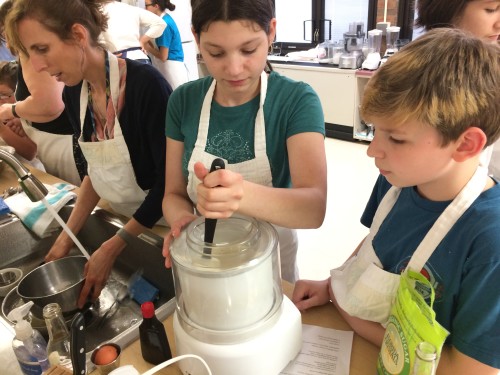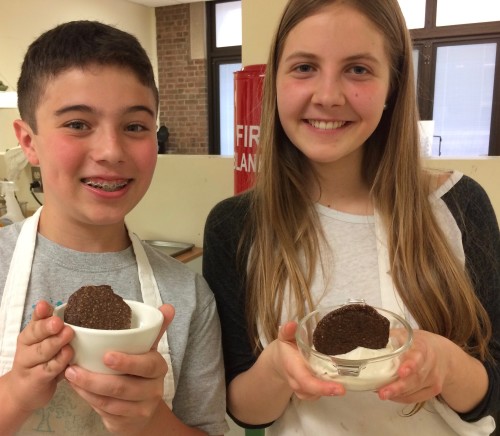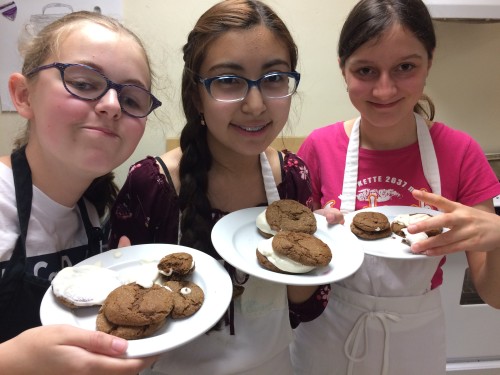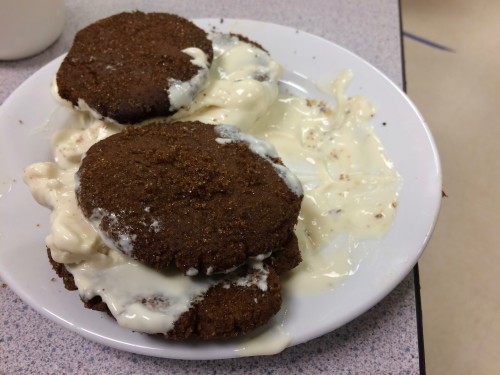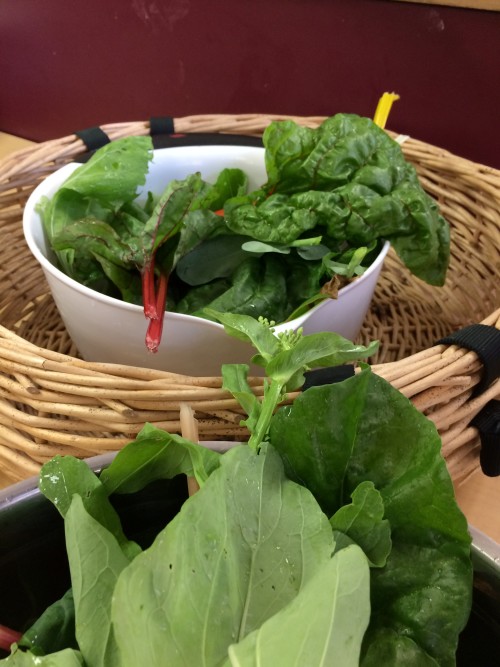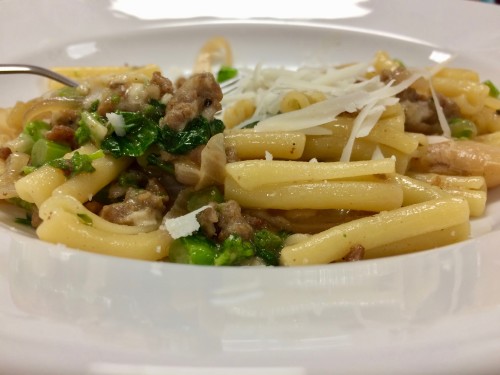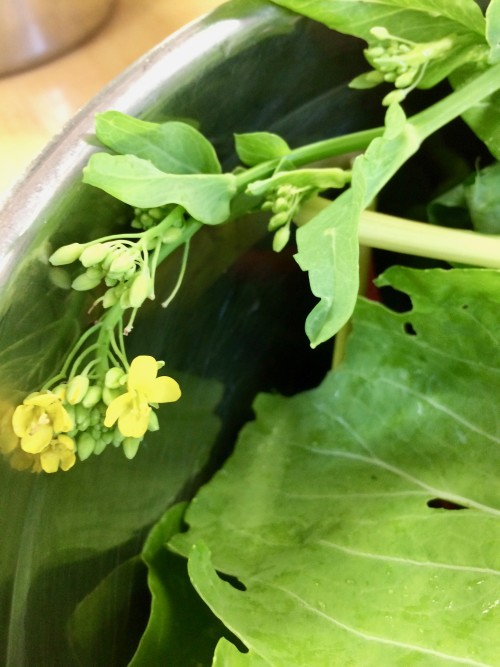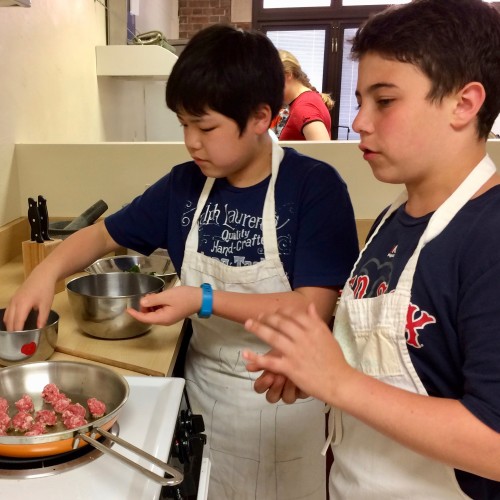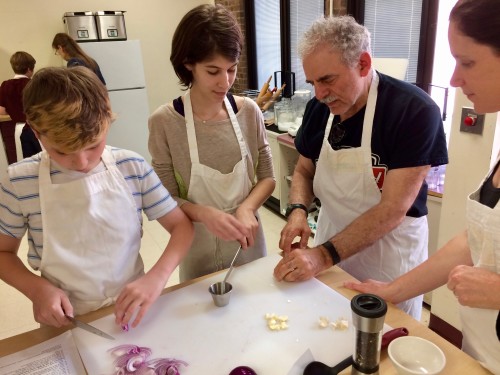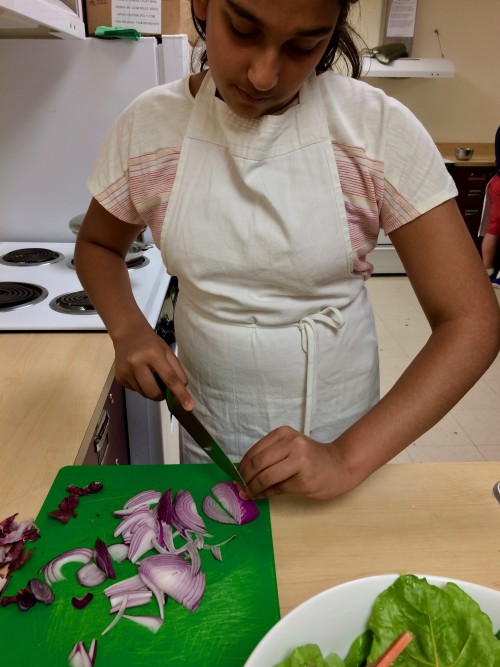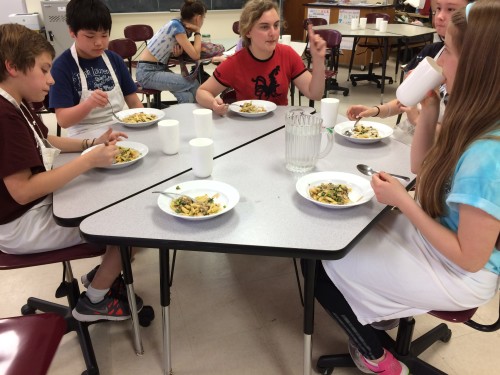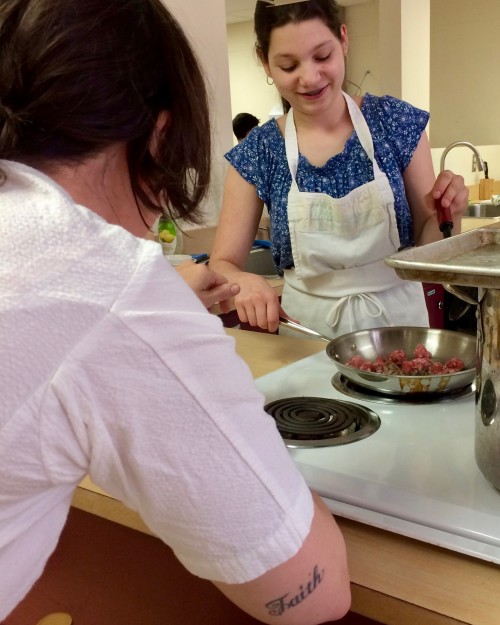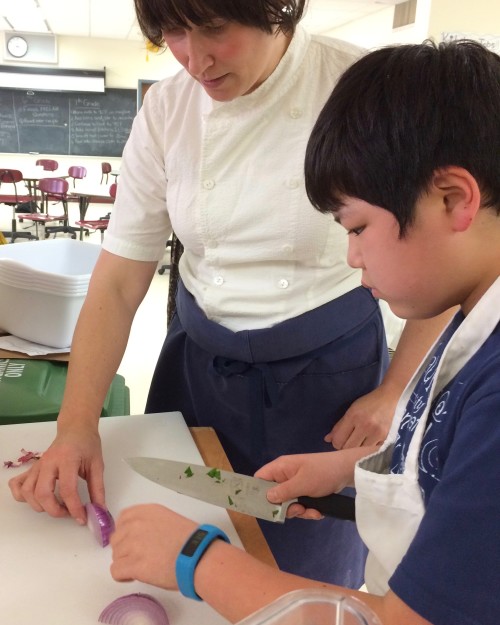
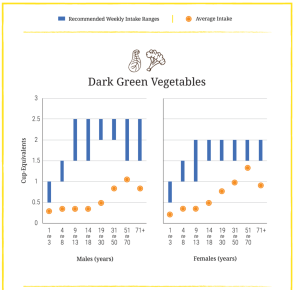
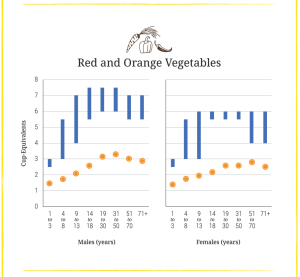
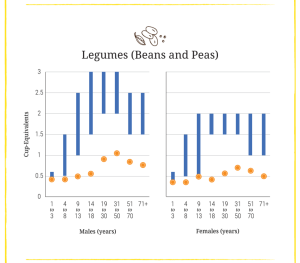
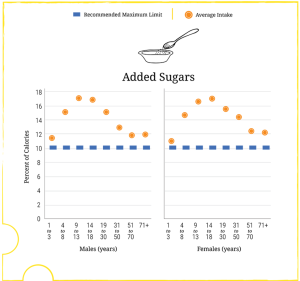
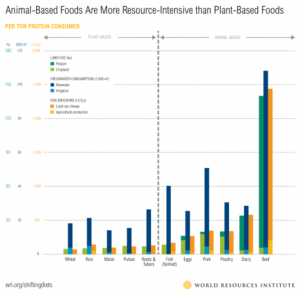
Welcome back to school and happy fall!
Our organization has been at work on matters of food literacy since 2005 – first getting edible gardens established at all the public schools, then placing garden educators in all K-5 schools, then establishing the Garden State on Your Plate Program, which brings chefs and farmers into cafeterias at lunchtime to serve up sample portions of very simple recipes made with local, seasonal ingredients. From there, we expanded to the next step, offering a seed-to-table after-school program at JW Middle School, now under the direction of Chef Michelle Fuerst and Master Gardener Priscilla Hayes. It’s our view that food, with its myriad roles in our society, is a profound tool of academic exploration, in addition to a source of pleasure and of community.
And now, since we are what we eat – and the food we eat becomes us – we have begun again to pipe up about school meals, wellness and equity and/or inequity of it.
Here’s some of what we know of wellness by way of collections of academic work. And since we know, it is not our obligation as citizens and as taxpayers and as parents to act?
*Our subsidized western diet, laden with processed, packaged items and too much meat, is making us sick and disabled, causing grief in families and communities and pushing health-care costs upward, mostly because of chronic, largely preventable diseases: heart disease, high cholesterol, high blood pressure, obesity, Type 2 diabetes and some cancers.
*The burden of these chronic diseases (a portion of the treatment of which also is subsidized) falls disproportionately upon vulnerable populations, but costs – economic and otherwise – cascade through society.
*Children (and adults) are not eating enough vegetables, beans and legumes, whole grains, fruits, nuts and seeds.
*Our diet is degrading the environment upon which all life is dependent: air, water, soil and biodiversity.
*Health and environment are foundational to wellness and prerequisites to social and emotional well-being and equity.
*Edible gardens and school cafeterias are five-senses labs and classrooms; children are learning every moment of wakefulness.
*Flavor rules.
*Selling/serving/marketing items because they’re “healthy” or “nutritious” dooms those items to a niche market.
*If we don’t provide food – good, just food — that people actually crave, or learn to crave, people won’t eat it.
*In 2014, the latest date for which figures are available, the National School Lunch Program served 30 million school meals each day and cost taxpayers $12.7 billion.
*Since equity is front and center, consider it in the light of the NSLP and retail-priced “competitive” or “a la carte” items: Studies show that the children most at risk from diet-related disease are those who qualify for free and reduced-price school meals. Delicious nutritiousness and palate education, then, are crucial to acceptance in this demographic. Throughout their k-12 experience at PPS, these children are set apart by only having school meals, by not having money to buy processed and packaged items sold at retail price as snacks or dessert, and later by time constraints – at the high school, standing in the lunch line for the subsidized meals takes all the time allotted for break. And that break is not honored as lunch; also is the only time for children to meet with teachers or the guidance staff, or take a makeup test.
With those points in mind, a start on ideas for all food sold on campus during the school day, followed by a collection of references and inspiration for thinking about foods we grow in the edible gardens at all schools at PPS, foods we use to teach in the JW Teaching Kitchens and any foods sold at PPS, whether through the subsidized National School Lunch Program or retail-priced processed/packaged items.
IDEAS FOR NSLP MEALS AT PPS
*Work to increase National School Lunch program participation by making all food frugal, crazy delicious & culturally adventurous (and representative of student body), using food on the tray to demonstrate and illustrate lessons in classes and in gardens
*use Dietary Guidelines for Americans (link below) charts to remedy shortfalls in foods for age groups
*use mostly plants
*use almost all whole grains
*cook from scratch (getting prep help from new buying co-op; see below)
*salad bar for each campus cafeteria
*make it beautiful (the room, the food – you first eat with your eyes)
*switch to bulk milk purchases (partner with buying co-op; see below)
*partner with other institutions to build community buying co-op (Princeton University, Institute for Advanced Study, Westminster Choir College, Princeton Theological Seminary, YMCA/YWCA, faith-based food programs)
*as backup, join the Good Food Purchasing Program (link below) or create a local version
*measure food waste and note up/down
*minimize packaging; eliminate single-serve packaging
A FEW RESOURCES & SOURCES OF INSPIRATION
*Friends of the Earth
*Shrinking the Carbon and Water Footprint of School Food: A Recipe for Combating Climate Change
*Executive summary from Friends of the Earth 2-year study of Oakland Unified School District
*Berkeley Unified School DistrictSchool Lunch Initiative
*Rethinking School Lunch Guide
*Chef Ann Foundation and her TED talk here
*Dietary Guidelines for Americans and a closer look at current intakes
*Creating a Sustainable Food Future (PDF)
*Good Food Purchasing Program
*WHO/FAO report: Diet, nutrition and the prevention of chronic diseases
*Principles of Healthy, Sustainable Menus
